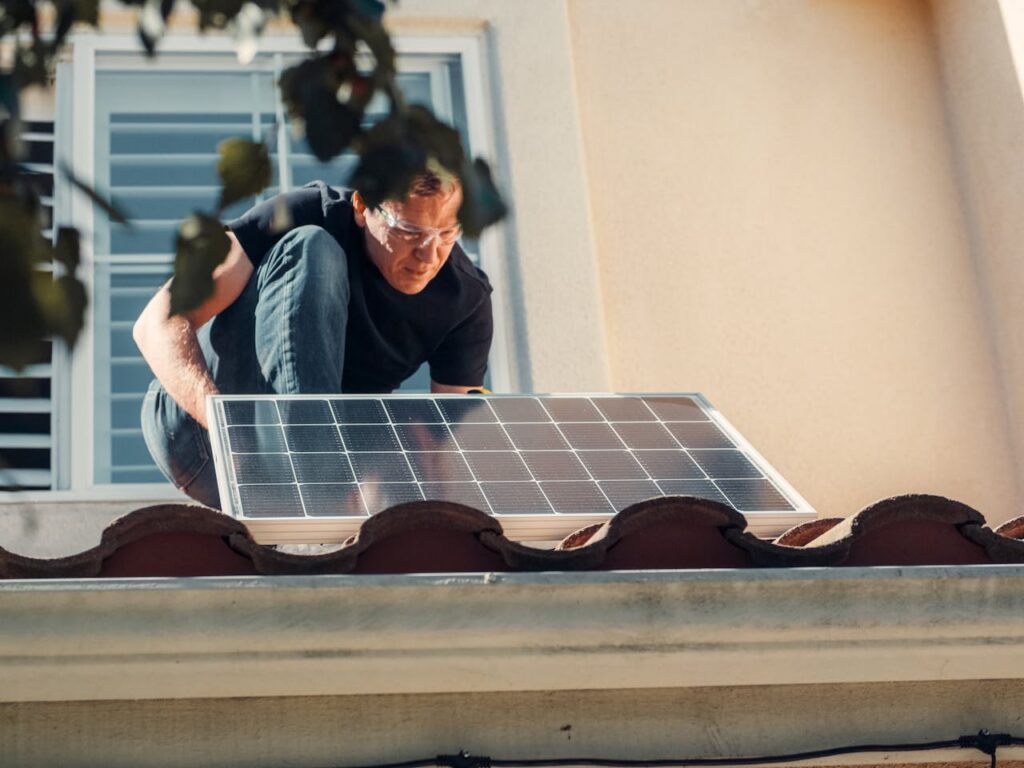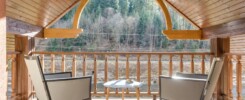
Chris Town Here, Owner Of Town Construction And Development Here With Some More Great Tips On Renovating for Solar Heating FOR YOUR NEW Shoreline Home.
When planning to build or renovate your home, the opportunity to incorporate passive solar heating is not only a smart way to reduce your energy bills but also a significant step towards sustainability. Passive solar heating utilizes the sun’s energy to heat your home naturally, reducing reliance on non-renewable energy sources. Here, we will explore key design tips when renovating for passive solar heating, ensuring your home stays warm in the winter and cool in the summer.
Understanding Passive Solar Heating
Before diving into the design tips, it’s crucial to understand what passive solar heating entails. This design strategy focuses on maximizing the energy from the sun to heat your home. By strategically positioning windows, choosing appropriate materials, and planning your home’s layout, you can capture and store solar energy without using mechanical systems.
Transitioning Smoothly: The Moving Process
Moving to your new or updated home can be an exciting yet daunting task when renovating for passive solar heating. For example, you might be moving from Virginia to Washington, and hiring professional interstate movers can provide a stress-free move across the country. Choose a moving company with experience in long-distance moves to handle your belongings with care. Proper planning, from packing to logistics, ensures your move is stress-free, allowing you to focus on settling into your energy-efficient home.
Renovating for Passive Solar Heating: Site Selection and Orientation
One of the foundational steps in passive solar design is choosing the right site and orienting your home correctly. Ideally, your home should face south to capture maximum sunlight throughout the day. This orientation allows the sun to penetrate deep into your living spaces during winter when the sun is lower in the sky, while in summer, the higher sun angle minimizes heat gain.
Alt-tag: A photo of houses in a village.
Caption: When renovating for passive solar heating, it is important to consider site selection and orientation.
Designing with Open Floor Plans
Open floor plans are beneficial in passive solar design because they facilitate the distribution of heat throughout the home. Fewer interior walls help solar heat to circulate more freely, maintaining a consistent temperature. Consider designing large, interconnected spaces that allow effective heat distribution from your south-facing windows.
Selecting Windows for Maximum Efficiency
Windows are a crucial element in passive solar heating. However, their placement is an important part of those equations. In order to maximize solar gain in the winter and minimize it in the summer, they should be strategically placed. High-performance, double- or triple-glazed windows with low-emissivity (Low-E) coatings can help control heat flow. South-facing windows should be large to capture sunlight, while east and west windows should be minimized to prevent overheating in the morning and afternoon.
Thermal Mass: Capturing and Storing Heat
Materials that absorb, store, and release heat—known as thermal mass—are essential in passive solar design. Concrete, brick, stone, and tile are excellent choices for thermal mass. When sunlight streams into your home, these materials absorb the heat and release it slowly, helping to maintain a stable indoor temperature. Incorporate these materials in floors and walls where they can receive direct sunlight.
Using Shading to Control Heat Gain
While capturing sunlight is crucial in the winter, it’s equally important to prevent overheating in the summer. Shading devices such as overhangs, pergolas, and deciduous trees can block high summer sun while allowing low winter sun to enter. Properly designed overhangs will provide shade when needed, keeping your home cool during the hottest months.
Insulation: Keeping the Heat In
Proper insulation is vital to ensuring the heat captured by the sun remains inside your home. To prevent heat loss, insulate walls, roofs, and floors with high-quality materials. Pay special attention to sealing gaps around windows and doors to avoid drafts. A well-insulated home maintains a comfortable temperature year-round with less energy consumption.
Ventilation for Air Flow and Temperature Control
Effective ventilation is necessary to prevent overheating and ensure a comfortable indoor environment. Use operable windows, vents, and fans to facilitate natural ventilation. Cross-ventilation, where windows on opposite sides of a room allow air to flow through, can be particularly effective in cooling your home during summer nights.
Alt-tag: Mini desk fan.
Caption: Effective ventilation is necessary to prevent overheating and ensure a comfortable indoor environment.
Integrating Renewable Energy Systems
While passive solar heating can significantly reduce your energy needs, integrating renewable energy systems like solar panels can further enhance your home’s sustainability. Solar panels can provide electricity to power your home, while solar water heaters can supply hot water. Combining these systems with passive solar design maximizes your use of renewable resources.
Aesthetic and Practical Landscaping
Landscaping plays a crucial role in passive solar design. Planting deciduous trees on the south side of your home provides shade in the summer while allowing sunlight to penetrate during winter after the leaves fall. Evergreens on the north side can act as windbreaks, reducing heat loss. Incorporating gardens and green spaces can also improve your home’s environmental footprint and aesthetic appeal.
Maintenance and Upkeep of Your Passive Solar Home
After successfully designing and moving into your passive solar home, it’s important to consider the ongoing maintenance and upkeep required to ensure its efficiency and longevity. Regularly cleaning your windows will maximize solar gain, as dust and dirt can significantly reduce their effectiveness. Inspect your insulation and seals annually to prevent heat loss, particularly around windows and doors. Maintaining your shading devices, such as adjusting pergolas and trimming trees, ensures they function properly throughout the year. Additionally, keeping your thermal mass surfaces free of clutter will allow them to absorb and release heat efficiently. By staying proactive with these maintenance tasks, you can continue to enjoy the benefits of passive solar heating for many years to come, maintaining a comfortable and sustainable living environment.
Conclusion: A Sustainable and Comfortable Home
Renovating for passive solar heating in your home design offers numerous benefits, from reducing energy costs to enhancing comfort and sustainability. You can create a home that efficiently utilizes the sun’s energy by carefully considering site orientation, floor plans, window placement, thermal mass, shading, insulation, and ventilation. Combining these passive strategies with renewable energy systems and thoughtful landscaping will further reduce your environmental impact. Embrace the principles of passive solar heating to enjoy a warm, inviting, and eco-friendly home year-round.



